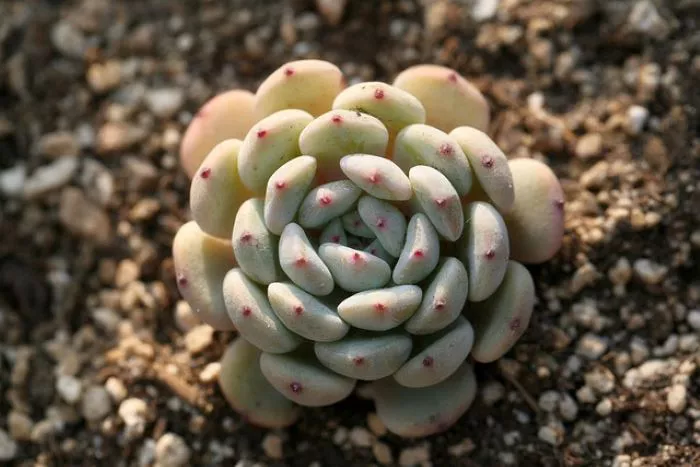Jade plants, scientifically known as Crassula ovata, are popular succulents known for their thick, fleshy leaves and resilience. These plants are often regarded as symbols of good luck and prosperity. While jade plants are relatively easy to care for, proper watering is crucial for their health and longevity. This article will provide a detailed guide on how often jade plants should be watered, considering various factors that influence their watering needs.
Understanding Jade Plant Watering Needs
Jade plants are succulents, which means they store water in their leaves, stems, and roots. This adaptation allows them to thrive in arid conditions. Overwatering is one of the most common mistakes made by jade plant owners. Unlike many other houseplants, jade plants prefer to dry out between waterings. Understanding their watering needs is essential to keeping them healthy.
Factors Influencing Watering Frequency
Several factors can influence how often you should water your jade plant. These include environmental conditions, pot size, soil type, and the plant’s growth stage.
Environmental Conditions
Temperature and humidity play a significant role in watering frequency. Jade plants thrive in temperatures between 65 and 75 degrees Fahrenheit. In warmer conditions, they may require more frequent watering. Conversely, during cooler months, their need for water decreases.
Humidity levels also affect watering. In dry indoor environments, jade plants may need more frequent watering compared to humid conditions.
Pot Size
The size of the pot can impact how quickly the soil dries out. A smaller pot will dry out faster than a larger one. If you have recently repotted your jade plant into a larger container, adjust your watering schedule accordingly.
Soil Type
Using well-draining soil is crucial for jade plants. A cactus or succulent mix is ideal. Soil that retains moisture can lead to root rot, so ensure your potting mix allows excess water to escape. The type of soil will also affect how quickly it dries out, influencing your watering frequency.
Growth Stage
Jade plants have a growing season and a dormant period. During the growing season, typically spring and summer, they require more water as they actively grow. In the dormant period, usually fall and winter, their water needs decrease significantly.
General Watering Guidelines
While specific watering needs can vary, there are general guidelines to follow when watering your jade plant.
Check the Soil Moisture
Before watering, always check the soil moisture. Insert your finger about an inch into the soil. If it feels dry at this depth, it is time to water. If it is still moist, wait a few more days before checking again.
Water Thoroughly
When you do water, ensure that you water thoroughly. This means watering until you see excess water draining from the bottom of the pot. This practice encourages deep root growth and helps prevent the roots from becoming root-bound.
Frequency
As a general rule, jade plants should be watered every two to three weeks during the growing season. In the winter months, reduce watering to once a month or even less. Always adjust based on environmental conditions and the specific needs of your plant.
Signs of Overwatering and Underwatering
Recognizing the signs of overwatering and underwatering is essential for maintaining the health of your jade plant.
Signs of Overwatering
Yellowing leaves: Leaves may turn yellow and drop off.
Mushy stems: The stems may become soft and mushy, indicating root rot.
Root rot: If you notice a foul smell from the soil or see black, mushy roots when inspecting the plant, it is a sign of overwatering.
Signs of Underwatering
Wrinkled leaves: Leaves may appear shriveled or wrinkled.
Leaf drop: The plant may drop leaves as it struggles to conserve water.
Stunted growth: The plant may stop growing or grow very slowly.
Adjusting Watering Practices
As you become more familiar with your jade plant’s needs, you may need to adjust your watering practices.
Seasonal Adjustments
Be mindful of seasonal changes. During the growing season, you may need to water more frequently. As temperatures drop in the fall and winter, reduce the frequency of watering.
Environmental Changes
If you move your jade plant to a different location, monitor its watering needs closely. A change in light exposure or humidity can alter how quickly the soil dries out.
Repotting Considerations
After repotting, the watering schedule may need adjustment. Newly potted jade plants may require less frequent watering until the roots establish themselves in the new soil.
Conclusion
Watering is a critical aspect of jade plant care. Understanding how often to water your jade plant involves considering various factors, including environmental conditions, pot size, soil type, and the plant’s growth stage. By following general watering guidelines and being attentive to your plant’s needs, you can ensure that your jade plant remains healthy and vibrant. With proper care, your jade plant will thrive and continue to bring beauty and good fortune to your home.
Related topic:


